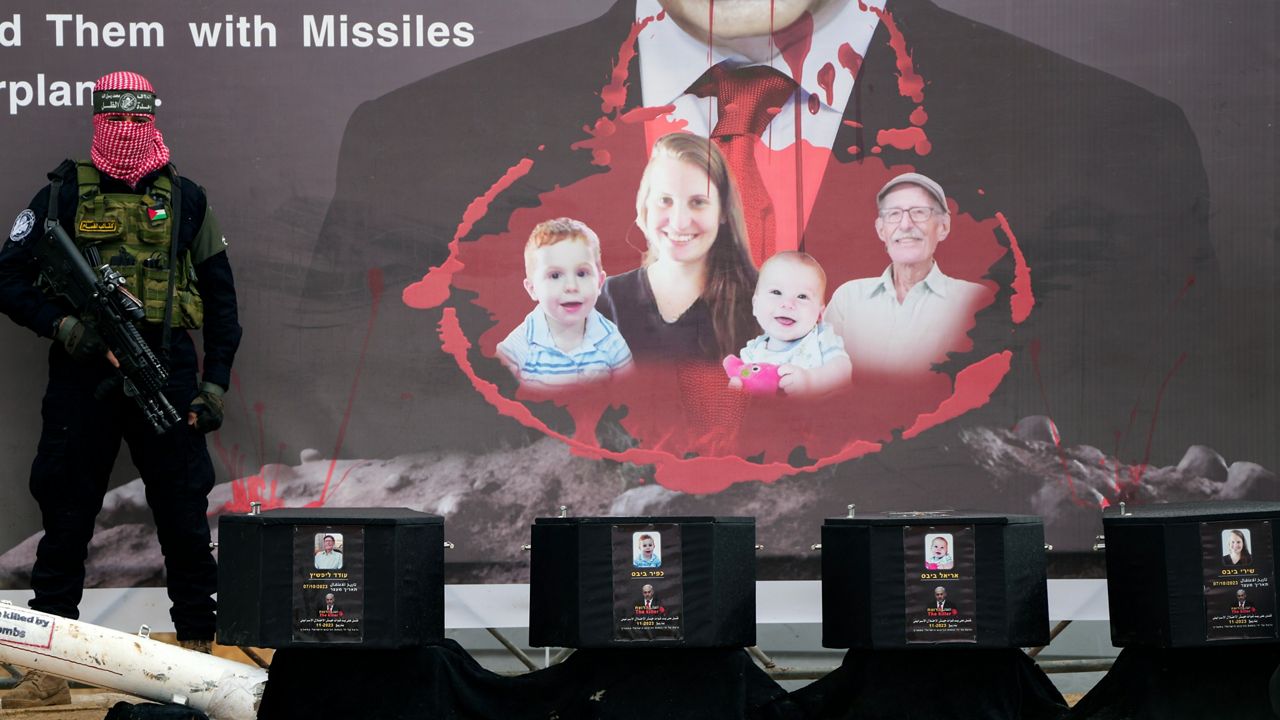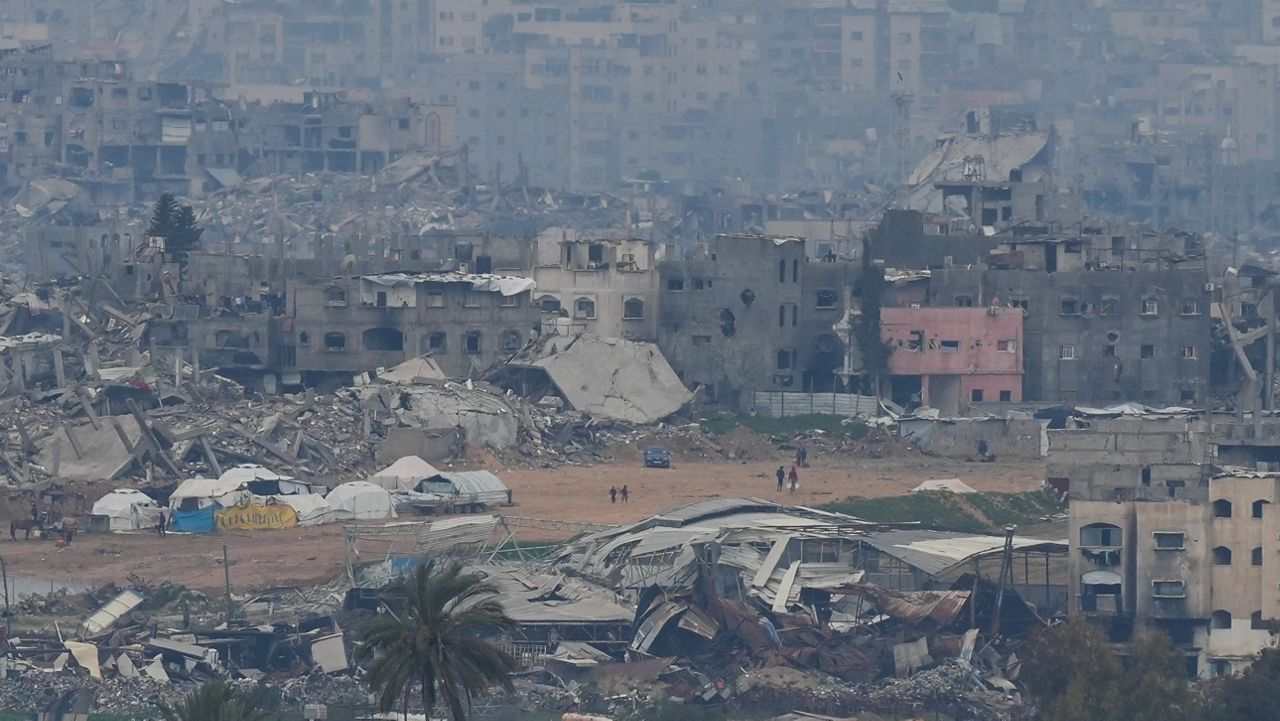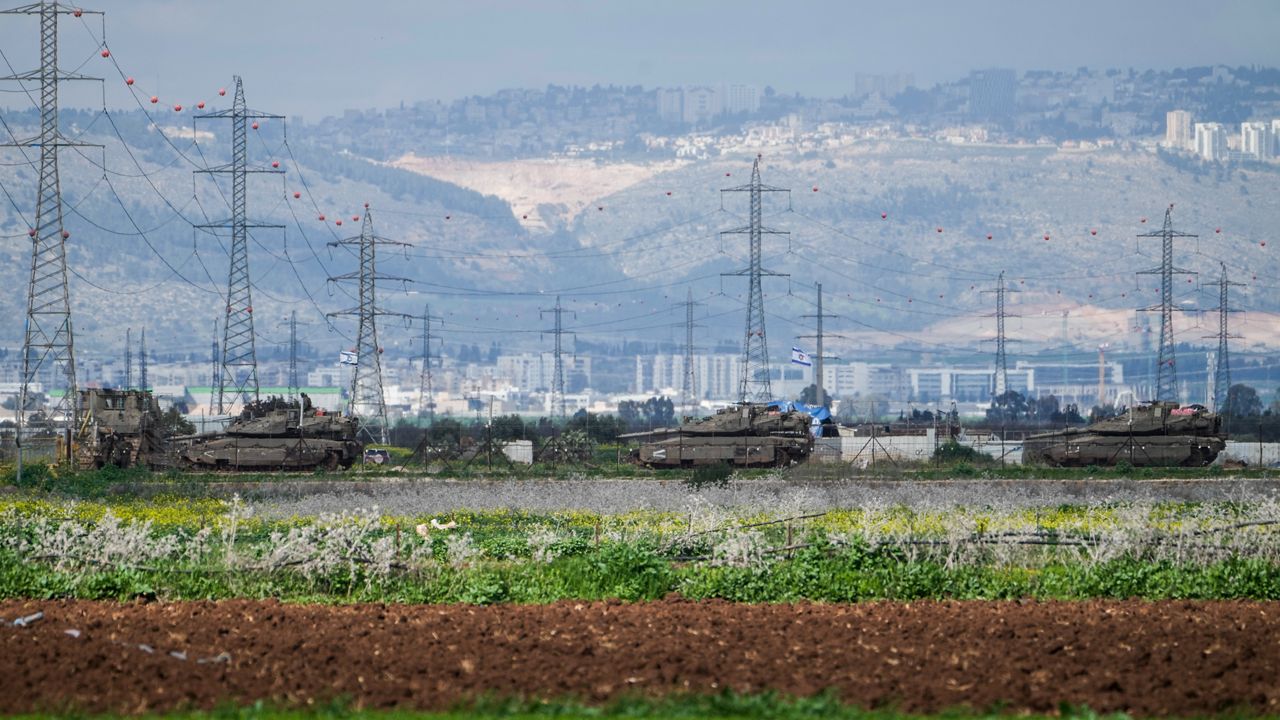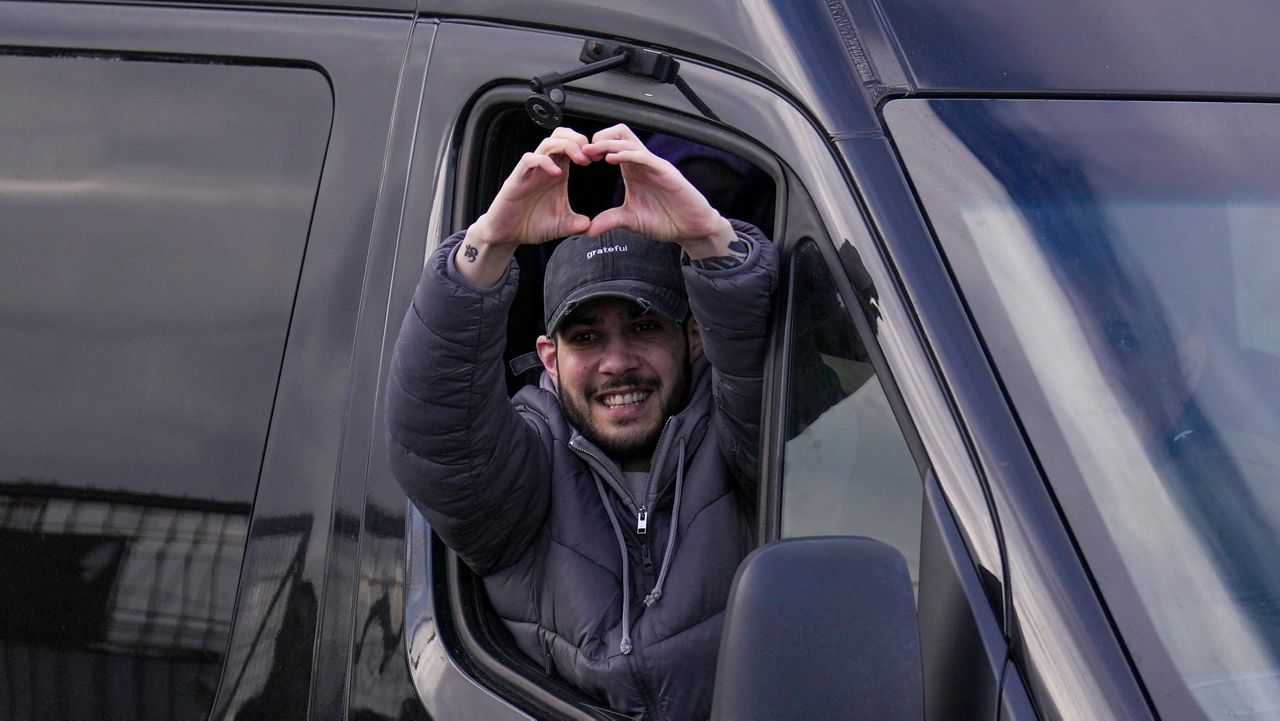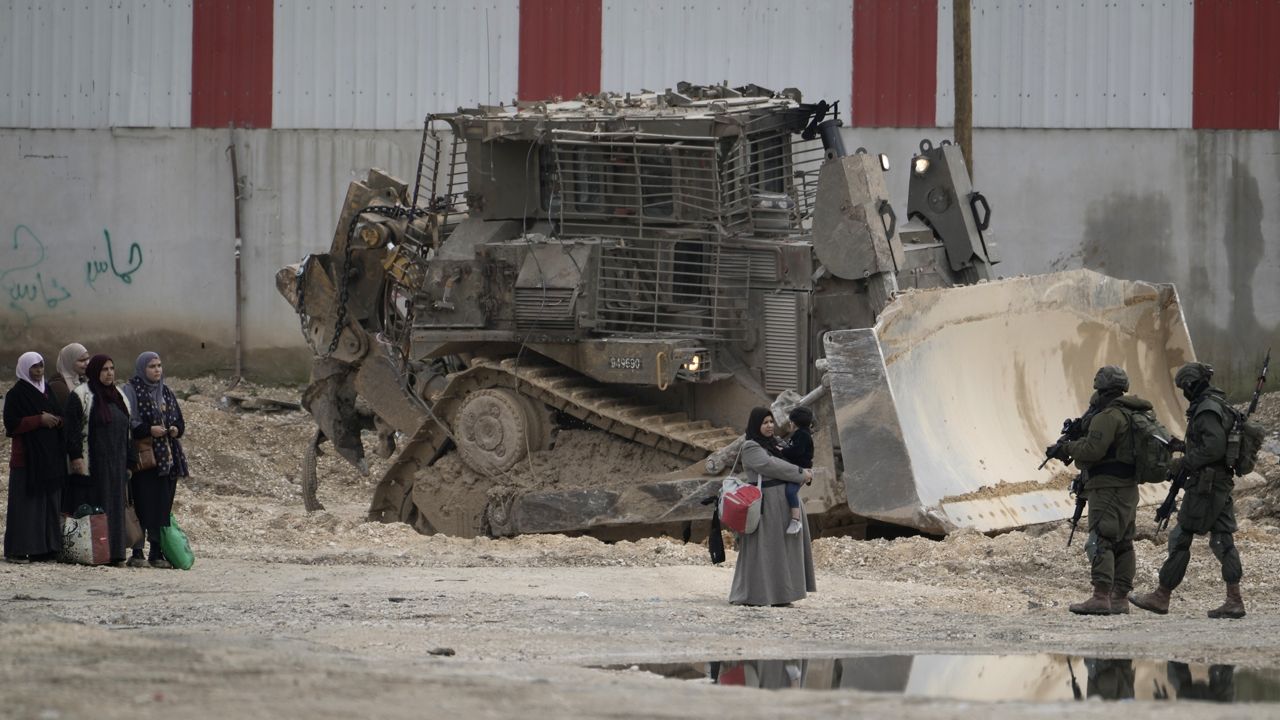TEL AVIV, Israel — The remains of two child hostages have been identified but another body released by Hamas was not the boys’ mother, the Israeli military said early Friday.
Hamas militants had turned over four bodies Thursday under the tenuous ceasefire that has paused over 15 months of war. Israeli confirmed one body was that of Oded Lifshitz, who was 83 when he was abducted during the Hamas attack that started the war on Oct. 7, 2023.
What You Need To Know
- The Israeli military says the remains of two child hostages have been identified but another body released by Hamas was not the boys’ mother
- Hamas militants had turned over four bodies Thursday under the tenuous ceasefire that has paused over 15 months of war
- Israeli confirmed one body was that of Oded Lifshitz, who was 83 when he was abducted during the Hamas attack that started the war in 2023
- The military said later the remains of Ariel and Kfir Bibas had been identified and the family notified
- But the military said the additional body was not that of their mother Shiri Bibas nor any other hostage
- It called the failure to return four hostages Thursday a violation of the utmost severity of the ceasefire agreement
The remains of Ariel and Kfir Bibas were identified by the National Institute of Forensic Medicine in collaboration with the Israel Police and the families were notified, the Israeli Defense Forces said in a statement. It said the boys were killed in captivity in November 2023.
But the additional body was not that of their mother Shiri Bibas, nor any other hostage, the military said.
“This is a violation of utmost severity by the Hamas terrorist organization, which is obligated under the agreement to return four deceased hostages,” the Israeli military said in a statement early Friday. “We demand that Hamas return Shiri home along with all our hostages.”
Hamas did not immediately respond to Israel’s announcement that the body was not of the boys’ mother.
The announcement from the Israeli military comes as a ceasefire between Israel and Hamas that began Jan. 19 remains shaky. A series of explosions Thursday on three parked buses rattled central Israel. The Israeli military said early Friday it had imposed restrictions on Palestinian movement and sealed off parts of in the West Bank amid its ongoing security operations there.
A statement on behalf of Prime Minister Benjamin Netanyahu said the Israeli military would “carry out an intensive operation against centers of terrorism” in the West Bank, raising the specter of a further escalation there.
The handover of four bodies to Israel during the day Thursday had set off a nationwide outpouring of grief as flag-waving crowds lined highways on a rainy day to pay respect to a convoy carrying the coffins and thousands packed a Tel Aviv square in an emotional nighttime vigil.
Many people wiped away tears and softly sang the national anthem as the caravan wound through southern Israel — a stark contrast to the celebratory return of 24 living hostages in recent weeks under a tenuous ceasefire that has paused over 15 months of war.
The handover was a grim reminder of those who died in captivity.
Hamas has said that all four were killed along with their guards in Israeli airstrikes. But Prime Minister Benjamin Netanyahu’s office said Thursday that Lifshitz was killed in captivity by the Islamic Jihad militant group.
Militants who handed over the bodies displayed four black coffins on a stage in the Gaza Strip surrounded by banners, including one depicting Netanyahu as a vampire. On each coffin, a photo of one of the hostages was stapled to the side.
Large numbers of masked and armed militants looked on as the coffins were loaded onto Red Cross vehicles before being driven to Israeli forces. The military later held a small funeral ceremony, at the request of the families, before transferring the bodies to a laboratory in Israel for formal identification using DNA.
In Tel Aviv where the bodies were transported, a double rainbow unfolded across the sky just before sunset. Thousands of people gathered at the city’s Hostage Square and recited traditional mourning prayers. Some held orange balloons, in honor of the Bibas boys, and the crowd swelled after sundown as musicians performed subdued ballads, matching the nation's grief.
"Our hearts — the hearts of an entire nation — lie in tatters," Israeli President Isaac Herzog said. “On behalf of the State of Israel, I bow my head and ask for forgiveness. Forgiveness for not protecting you on that terrible day. Forgiveness for not bringing you home safely.”
Lifshitz's family said after the handover that his remains had been officially identified. His son, Yizhar, told an Israeli TV station that it had brought some closure to the family. He said they did not yet know the cause of death.
“On a certain level, it closes the small chance that we had thought about," he said. "It is also closure that he will be buried back on the kibbutz. It’s a difficult day.”
The four bodies were the first of eight hostages that Israel believes are dead and to be returned during the current phase of the ceasefire.
Infant was the youngest taken hostage
Kfir Bibas was just 9 months old, a red-headed infant with a toothless smile, when militants stormed into the family's home on Oct. 7, 2023. His brother, Ariel, was 4. Video shot that day showed a terrified Shiri swaddling the two boys as militants led them into Gaza.
Her husband, Yarden Bibas, was taken separately and released this month after 16 months in captivity.
Relatives in Israel have clung to hope, marking Kfir's first and second birthdays and his brother's fifth. The Bibas family said in a statement Wednesday that it would wait for "identification procedures" before acknowledging that their loved ones were dead.
Supporters throughout Israel have worn orange in solidarity with the family — a reference to the two boys' hair color — and a popular children's song was written in their honor.
Like the Bibas family, Oded Lifshitz was abducted from Kibbutz Nir Oz, along with his wife, Yocheved, who was freed early in the war as an apparent humanitarian gesture.
Hamas-led militants abducted 251 hostages, including about 30 children, in the Oct. 7 attack, in which they also killed around 1,200 people, mostly civilians.
More than half the hostages, and most of the women and children, have been released in ceasefire agreements or other deals. Israeli forces have rescued eight and have recovered dozens of bodies of people killed in the initial attack or who died in captivity.
It's not clear if the ceasefire will last
Hamas is set to free six living hostages on Saturday in exchange for hundreds of Palestinian prisoners, and says it will release four more bodies next week, completing the ceasefire's first phase. That will leave the militants with about 60 hostages, all men, around half of whom are believed to be dead.
Hamas has said it won't release the remaining captives without a lasting ceasefire and a full Israeli withdrawal. Netanyahu, with the full backing of the Trump administration, says he's committed to destroying Hamas' military and governing capacities and returning all the hostages, goals widely seen as mutually exclusive.
Trump's proposal to remove about 2 million Palestinians from Gaza so the U.S. can own and rebuild it, which has been welcomed by Netanyahu but universally rejected by Palestinians and Arab countries, has thrown the ceasefire into further doubt.
Hamas could be reluctant to free more hostages if it believes that the war will resume with the goal of annihilating the group or forcibly transferring Gaza's population.
Israel's military offensive killed more than 48,000 Palestinians, mostly women and children, according to Gaza's Health Ministry, which doesn't distinguish between civilians and combatants in its records. Israel says it has killed more than 17,000 fighters, without providing evidence.
The offensive destroyed vast areas of Gaza, reducing entire neighborhoods to fields of rubble and bombed-out buildings. At its height, the war displaced 90% of Gaza's population. Many have returned to their homes to find nothing left and no way of rebuilding.




